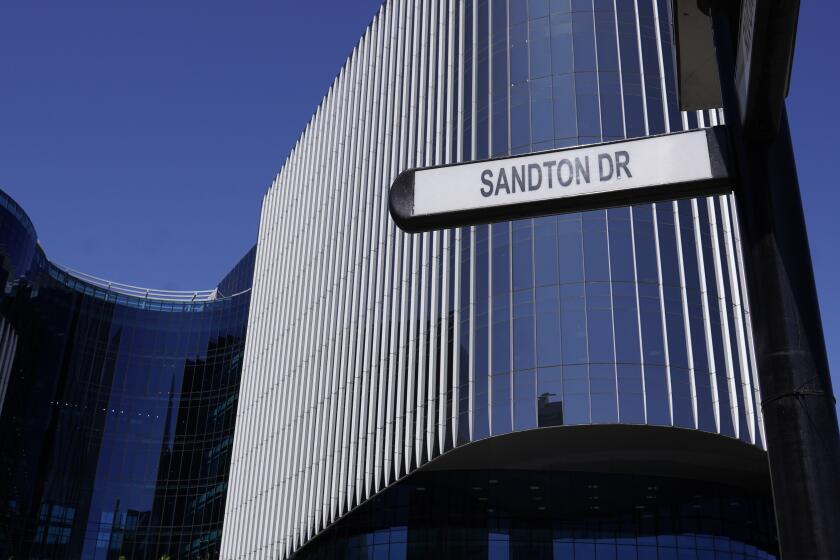Good First Aid for Hospitals
The $250-million federal infusion announced Friday by Health and Human Services Secretary Tommy G. Thompson is not going to fix L.A. County’s ailing health-care system, not as long as Washington ignores the underlying problem: millions of people without medical insurance. But the money does buy time, and as any patient with a grim prognosis knows, the trick is to survive from one treatment to the next until a cure comes along.
The additional money can’t, for example, keep the Rancho Los Amigos National Rehabilitation Center open, at least as a county hospital. But it can help ease the hospital’s transition from a county-run center to a private, nonprofit one.
Los Angeles County is the poverty capital of the country, which is why its hospitals are overwhelmed. But it is also home to great wealth. Local philanthropists could find few better causes than this hospital renowned for its work with neuromuscular diseases and the severe spinal cord and head injuries that car wrecks, stray bullets and surfing accidents parcel out indiscriminately.
Take Annie Ruth, who was 5 years old and a budding gymnast when she tumbled off a balance beam into every parent’s nightmare. Paralyzed from the neck down, she learned to breathe during the day without a ventilator, to operate an electric wheelchair with her chin and to use a computer with a mouth stick. Thanks to Rancho. Thirty years after her injury, she runs a computer company, paints -- and skydives.
The California Community Foundation is spearheading a drive to make the hospital independent, but it’s going to take time. If it can begin to attract donors and come up with a workable plan in the 60 days allotted by the supervisors, they should match its efforts with extra time and money to make the transition work.
The new federal aid can also help keep hospital beds open at County-USC Hospital. County voters in November approved a property tax increase for money-losing emergency rooms and trauma centers threatened with closure. But financial losses, which the new tax will help reimburse, aren’t the only threat to the emergency system.
The bottleneck behind the increasing problem of ambulance diversions is as much a problem of outflow as inflow: There are not enough hospital beds to move patients into once they’re stabilized. This is already a huge problem at County-USC, where patients are parked in hallways for hours -- and ambulances are turned away.
Enormous effort went into securing this package at a time of war drums and deficits. Gov. Gray Davis talked the Bush administration out of $100 million more than it had promised. County health officials answered charges of poor management by making painful budget cuts. And county voters showed they were willing to do their share by raising property taxes. So take a bow, everyone -- and get back to working on a cure.
More to Read
Sign up for Essential California
The most important California stories and recommendations in your inbox every morning.
You may occasionally receive promotional content from the Los Angeles Times.










